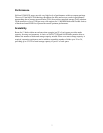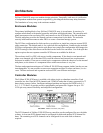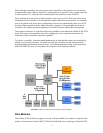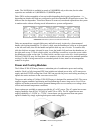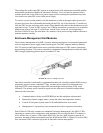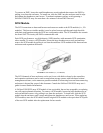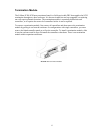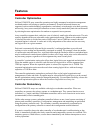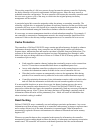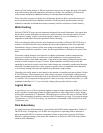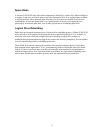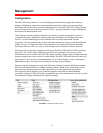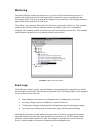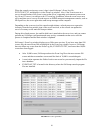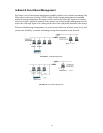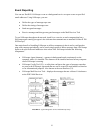The surviing controller of a fail-over process always becomes the primary controller. Replacing
the faulty controller will result in an automatic fail-back process, where the array restores a
redundant controller configuration. The new controller will become the secondary controller until
the next reset or power cycle of the array, at which time the original primary/secondary
arrangement will be restored.
A particular logical drive must be assigned to either the primary or secondary controller. The
controller a logical drive is assigned to performs all necessary functions for that set of disks until
a controller fail over occurs. One logical drive cannot be assigned to both controllers, but logical
drives can be distributed among the controllers to balance controller workloads.
It is necessary to connect management interfaces to both redundant controllers. For example, if
one controller is connected to a management network, the second controller should be also be
connected. Failure to do this may interupt management access if a controller fail over occurs.
Cache Protection
The controllers of SANnet II 200 SCSI arrays contain specialized memory designed to enhance
performance through caching. Array controllers use this high-speed cache to provide better
response times, transaction rates and transfer rates than is possible from array disks alone. The
contents of the cache must be protected against loss since information flows through it while
disks in the array are being read from or written to. SANnet II 200 SCSI arrays protect its cache
in a number of proven ways:
· Each controller contains a battery backup that continually protects cache content from
loss for 72 hours due to uncontrolled shut downs or unplanned power loss.
· Arrays with redundant controllers synchronize write cache content between controllers
to ensure the information remains available in the event of controller fail over.
· Write-back cache contents are transparently written to the appropriate disks during
periods of low controller activity and as the write cache reaches maximum capacity.
· Controllers minimize the amount of time information remains within write-back cache
and will flush the information to disks after several seconds regardless of activity.
If an uncontrolled shut down or power loss occurs, the battery backups preserve the entire
contents of the controller cache memories for 72 hours. If the SANnet II 200 SCSI array is
powered on within this time frame, the controllers automatically flush any necessary information
to disks during start up. After 72 hours, the battery backups will discharge completely and all
information within the cache will be permanently lost – which will result in limited data loss
when write-back caching is enabled.
Read Caching
SANnet II 200 SCSI arrays continually use read caching to maximize performance. Any recent
information read from an array remains in its controller cache memory to improve response times
and to reduce disk activity if the same information is requested again. Older information is
automatically replaced with newer information as the amount of allocated read cache memory
begins to fill.
Whenever a controller detects three sequential read requests for information, the controller
automatically begins reading-ahead to reduce the latency of subsequent read requests to maximize
transfer rates. The controller will continue read-ahead operations until the current allocated
15



